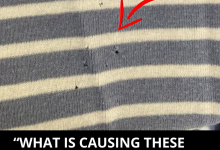Air-drying your clothing is the best way to save cash. Check out these tips and tricks for air-drying all your washables—indoors and out.
Are you taking full advantage of this good laundry habit?

If you routinely pull your clean laundry from the washing machine and toss it right in the dryer, it may be time to break the habit. There are ample reasons for letting nature take its course and air-drying your garments and linens, and enjoying as a bonus that fresh scent and feel you can only get from the great outdoors. Consider air-drying clothes if you want:
To save money and energy
Air-drying will greatly reduce utility costs; after your central heating and air conditioning system, your electric dryer is perhaps the biggest energy sucker in your home, representing, on average, around six percent of your home’s energy consumption each year.
Your clothes fit properly
Ever put a favorite pair of perfectly fitting jeans into the dryer only to pull out something about a size too small to zip? The appliance is notorious for shrinking fabrics, particularly absorbent ones, such as cotton, wool, rayon, and linen. As high heat and tumbling action suck away moisture, fabric fibers pull together tightly and curl up in response, resulting in clothes that no longer fit.
To lessen wardrobe wear and tear.
Air-drying is much easier on your clothes. The combo of heat and tumbling wears away at the strength of fabric fibers, causing tiny bits to break away–that’s what creates the fuzzy stuff in your dryer’s lint trap. Natural fibers, particularly cotton and wool, are more prone to shedding lint than synthetic fabrics, but both are damaged during the drying process, which eventually shows up in the form of thinned-out towels and worn edges along with your clothing.
If you’re ready to give air-drying a try, first check local ordinances (neighborhoods with homeowner associations may forbid the practice). Then follow these dos and don’ts for great results.
DO keep your clothesline clean.

Wipe your outdoor clothesline clean of dust and bird droppings before hanging freshly laundered garments, linens, and towels. When removing dry duds, don’t leave the clothespins clipped to the line between uses; they’ll rust or get dirty, and that can stain your clothes. Instead, take down the pins and store them in a clothespin bag—Veamor makes a handy one that clips right to your clothesline, belt loop, or drying rack.
DON’T forget to check pollen and weather reports.

If you or a family member suffers with hay fever or other pollen-based allergies, it’s wise to avoid drying clothing outside on days when pollen counts are high. Most weather apps give this information, but if yours doesn’t, enter your zip code on Pollen.com for your area’s daily pollen forecast.
DO start with the largest items.

If hanging sheets, towels, and clothing on the same clothesline, start with the sheets, then hang the towels, and hang your clothing last. That way, you can make the most efficient use of the space. And leave at least an inch or so between items for good airflow, which speeds up the drying process.
DON’T hang sweaters or other heavy garments.

Forget about hanging your knit sweaters from a clothesline or indoor rack; that will lead to saggy shoulders and misshapen sleeves. Instead, lay sweaters, jackets, and heavy knit shirts on a mesh, flat drying rack like the one from OXO Good Grips (available on Amazon). Turn garments over once or twice as they dry to speed up the process and maintain even drying, as moisture tends to settle at the bottom of heavy fabrics.
DO give clothes a shake before air-drying them.

To stave off the stiffness that can occur on air-dried clothing and linens, give each piece a good shake before hanging it on the line or drying rack. Shaking fabric fresh out of the washing machine helps fluff up its fibers to prevent stiffness and keeps it from clinging to itself. And fabric should be fully stretched out—not crumpled or clinging—to keep wrinkles at bay.
DON’T forget a fan if air-drying indoors.

A gentle breeze is perfect for air-drying clothing, as it whisks away moisture quickly and evenly, and creates good airflow around the wet laundry. Simulate a breeze for an indoor clothesline or rack by turning on a ceiling fan or portable fan in the same room as your laundry, or opening the windows.
DO hang laundry properly.

Hanging wet laundry properly helps it to dry as quickly and wrinkle-free as possible.
- Pants: Line up the inner seams and then pin them to the clothesline or drying rack by the hems, not the waistband. As the slightly heavier waistband hangs down, it will exert a bit of tension on the fabric, helping pull away wrinkles.
- Knits: Pin knit tee shirts, skirts, etc. upside down, as the thicker fabric of the hem isn’t as likely to sag or show clip marks as the shoulders.
- Woven shirts: Ideally, you’d dry these hangers, but if using clothespins, clip the shirts by the bottom hems and cuffs.
- Small garments: Socks, underwear, babies or children’s clothing, and swimsuits aren’t generally heavy enough to sag when damp, so hang them in whatever position makes most effective use of your drying rack or clothesline space.
- Sheets: Fold in half and then pin to the clothesline by the corners. Add an extra clip or two in the middle for better security on breezy days. Flip the sheets halfway through the drying process to release moisture that’s gathered at the bottom of the fabric.
- Towels: Pin by the corners for a clothesline, or fold evenly over a drying rack. Either way, they will dry faster if you flip them once the top feels dry, but the bottom is still damp.
DON’T dry brights and darks in direct sunlight.

Direct, intense sunlight breaks down the dyes used on fabrics, and leads to fading. When air-drying dark or bright garments outside, the rack or clothesline should be in a shaded but warm spot, preferably with a slight breeze for better airflow.
DO let the sun bleach lights.

Conversely, take advantage of the sun to help bleach out white clothing and linens by setting these fabrics in full-sun, slightly breezy locations. Full sun is also the best spot for air-drying socks and underwear, as the sun’s UV rays quite effectively kill the bacteria that cause odor on these types of garments.
DON’T air-dry down garments.

When wet, down tends to form into clumps. Dry your down-filled jackets, vests, and comforters in the dryer, preferably with some clean tennis balls, as the tumbling actions helps restore down to a fully fluffy state. Air-drying these types of garments can leave them lumpy or misshapen.
DO fold laundry as you remove it from the line.

To keep your clean, dry clothes looking good, fold them as you pull them from the drying rack or clothesline, and then put them away immediately. Letting garments sit in the laundry basket encourages wrinkles.
DON’T be impatient.

Unless you’re hanging your laundry outside on a summer scorcher, it’s generally going to take longer for clothes to air-dry than in your machine. While it’s hard to generalize about how long it will take your laundry to air-dry—fabric type, air temperature, and presence or absence of wind all play a part—expect it to take two to four hours for most types of fabric on a pleasantly warm day with a light breeze. Just remember to never put away damp clothes or linens, which would invite mold and mildew.







